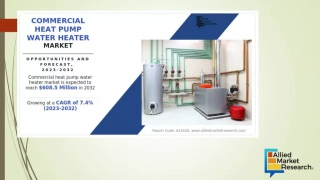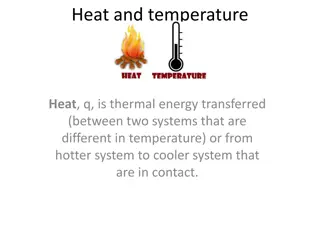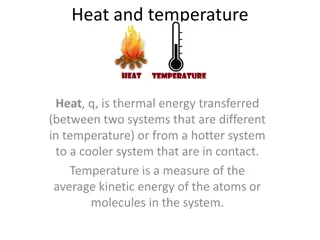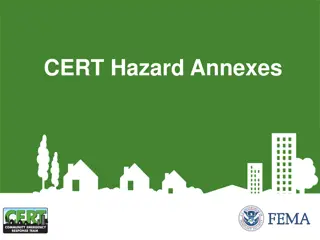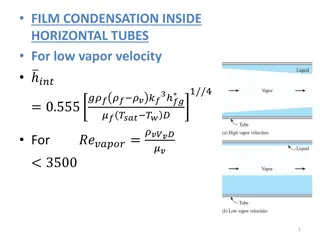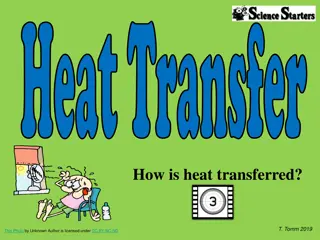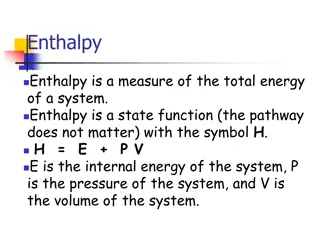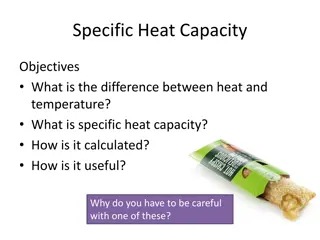Heat Transfer
In the study of heat transfer, condensation plays a crucial role as vapor turns into liquid on a surface maintained at a lower temperature. This process involves film condensation, various flow regimes, sub-cooling of liquids, and theories by researchers like Nusselt. Understanding these concepts is essential for designing efficient heat transfer systems.
Download Presentation

Please find below an Image/Link to download the presentation.
The content on the website is provided AS IS for your information and personal use only. It may not be sold, licensed, or shared on other websites without obtaining consent from the author.If you encounter any issues during the download, it is possible that the publisher has removed the file from their server.
You are allowed to download the files provided on this website for personal or commercial use, subject to the condition that they are used lawfully. All files are the property of their respective owners.
The content on the website is provided AS IS for your information and personal use only. It may not be sold, licensed, or shared on other websites without obtaining consent from the author.
E N D
Presentation Transcript
Heat Transfer Condensation
CONDENSATION HEAT TRANSFER Whenever a saturated vapour at a temperature Tsatis brought in contact with a surface maintained at temperature Tssuch that Tsis less than Tsatvapours condense on the surface.
Film Condensation and Flow Regimes Thickness of the film is zero at the top of the plate and increases as we travel down the plate due to additional condensation of vapour. Initially, the liquid film flow is laminar; after some distance it will become wavy and later, it may even turn turbulent. These different flow regimes are identified according to a 'film Reynolds number', defined as follows: ???=??.??.?? ?? =4 .??.??.?? ? .?? =4 . ??.??.? =4 .? ? .?? ??
sub-cooling of the liquid can be taken into account by replacing hfgby a 'modified latent heat of vaporisation ?? ?? = ??+ 0.68 ???(???? ??) Similarly, if a superheated vapour at a temperature, Tv, enters a condenser and condenses, the superheated vapour has to be cooled to Tsatfirst, and then condensed at Tsatand then sub-cooled to some temperature between Tsand Tsat Then, modified latent heat of vaporisation is: ?? = ??+ 0.68 ??? ???? ?? + ???(?? ????) Then, rate of heat transfer in condensation becomes: ???????= .?. ???? ?? = ? . ?? , defined as: , , ,
Nusselt's Theory for Laminar Film Condensation on Vertical Plates Nusselt made the following simplifying assumptions in his analysis: Flow of liquid film is laminar Heat flow is mainly by conduction through the liquid film Temperature is Tsat the liquid-plate interface and Tsatat the liquid-vapour interface and the temperature gradient between them is linear Velocity of vapour is low, i.e. there is no viscous shear force at the liquid-vapour interface Properties of the liquid are constant.
1 4 3.? . ?? ?? ?? ?? .?? ??.? . ???? ?? ???= 0.943 . 8
Film Condensation on Inclined Plates, Vertical Tubes, Horizontal Tubes and Horizontal Tube Banks Inclined plates: inclined 1 4 3.?.???(?) . ?? ?? ?? ?? .?? ??.? . ???? ?? = 0.943 . 9 Vertical tubes: Eq. 8 for laminar condensation on vertical plates can also be used the outer or inner surface of a vertical tube . if D >> ?
Horizontal tube-laminar film condensation: 1 4 3.? . ?? ?? ?? ?? .?? ??.? . ???? ?? horiz.= 0.729 . horizontal tubes on a matrix containing N tubes 1 4 3.? . ?? ?? ?? ?? .?? ??.?.? . ???? ?? horiz.= 0.729 .


